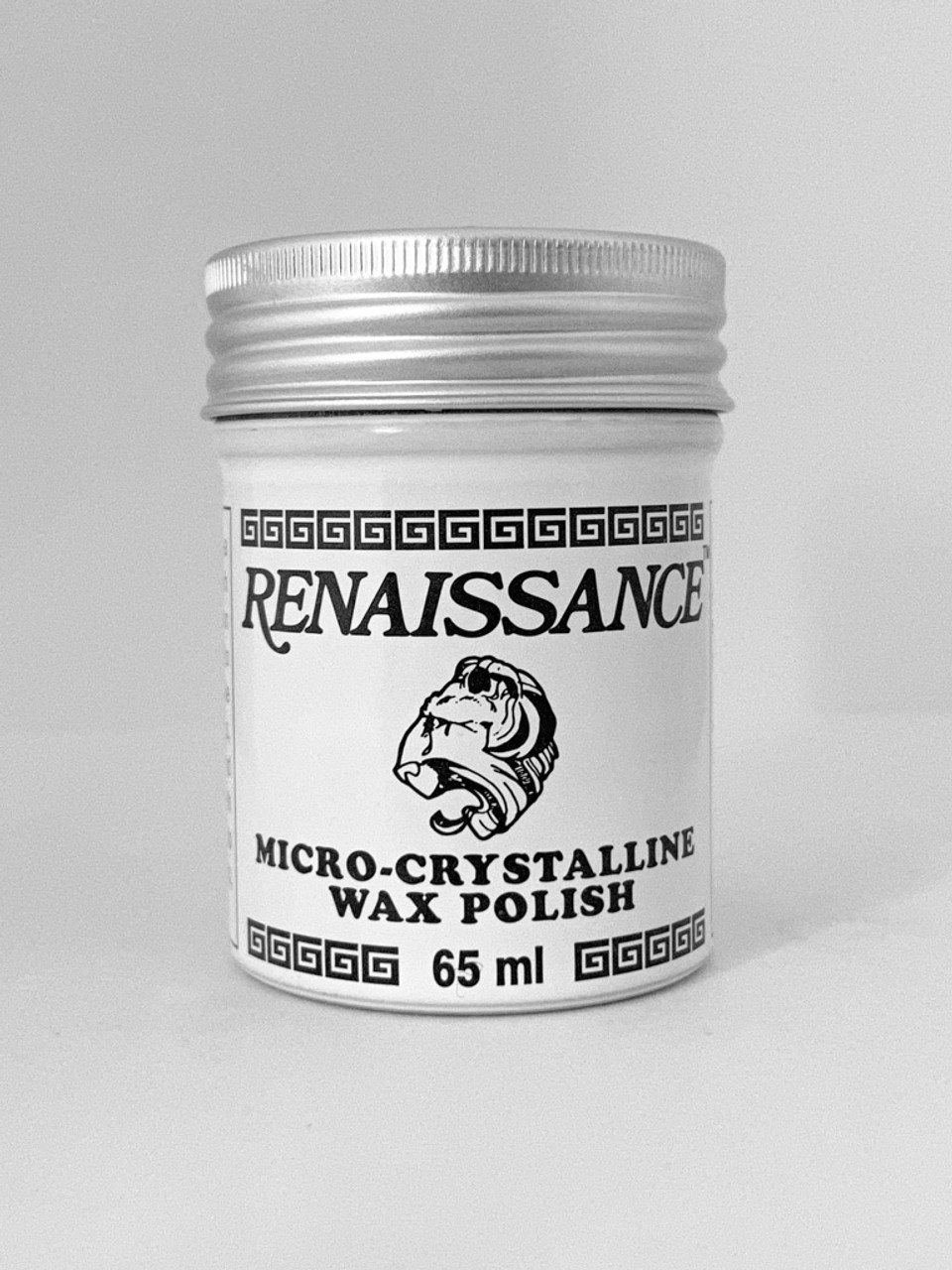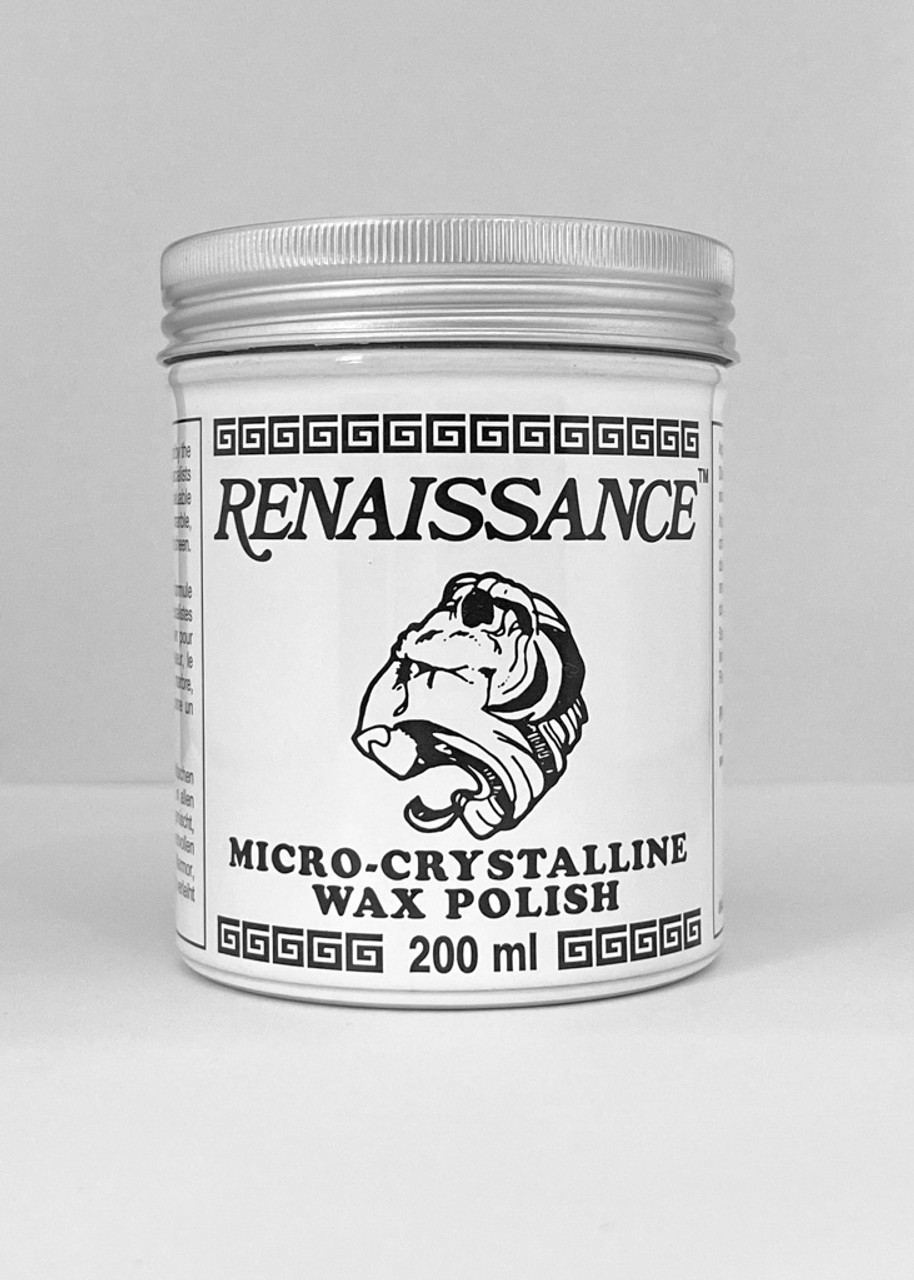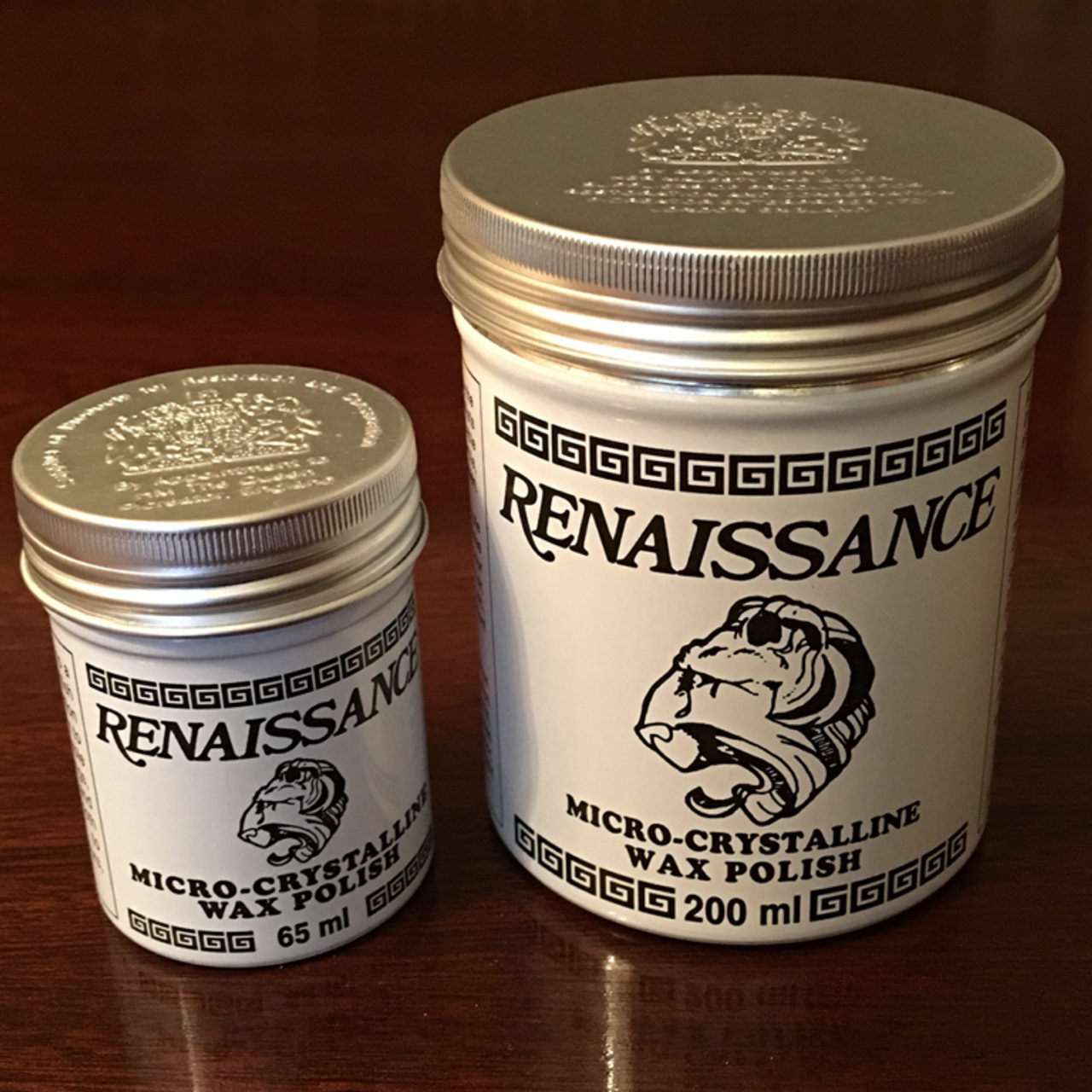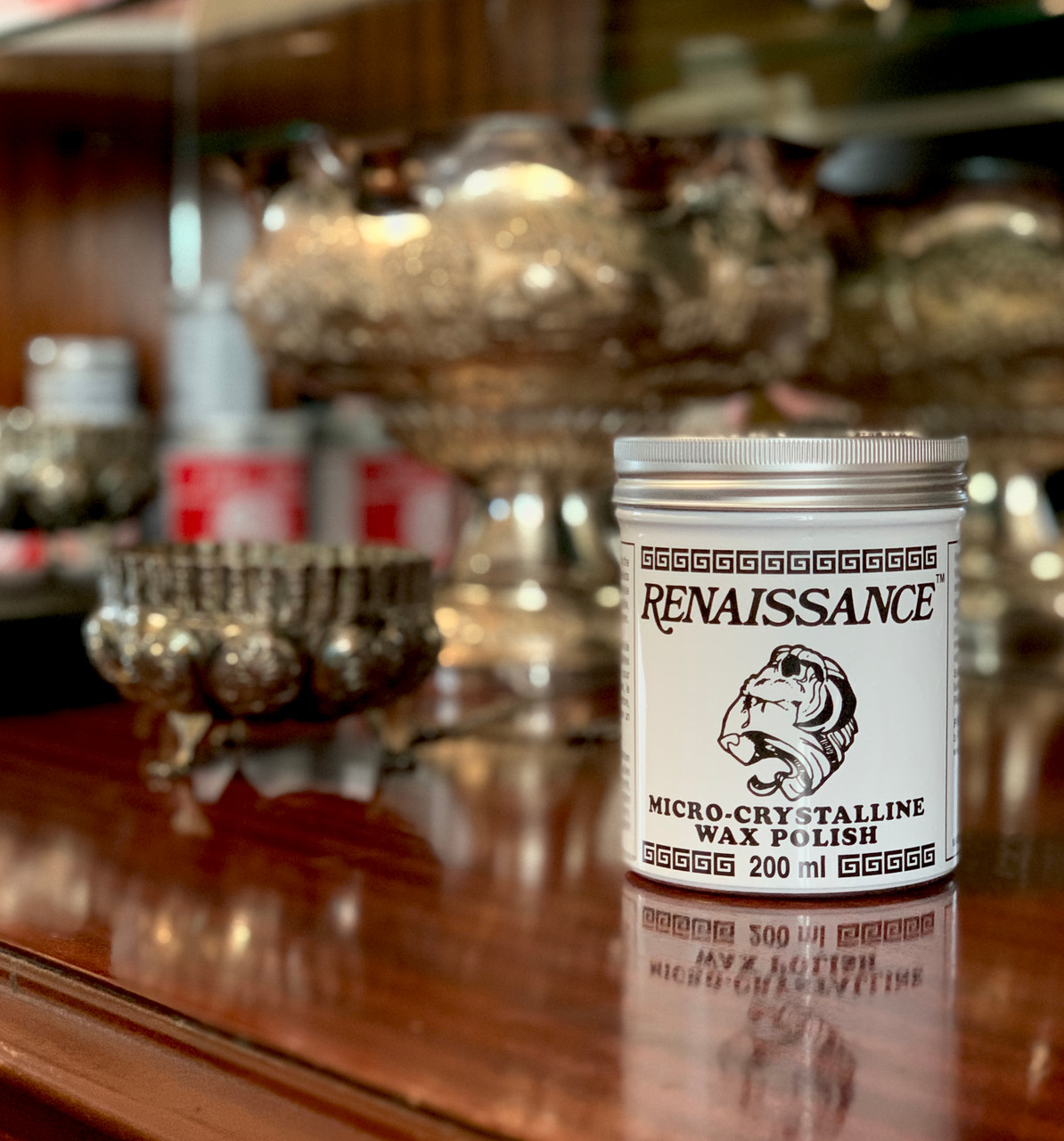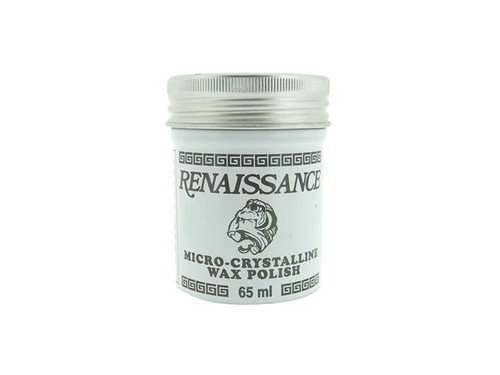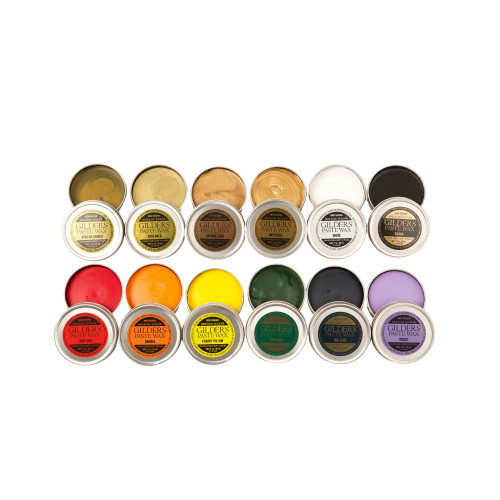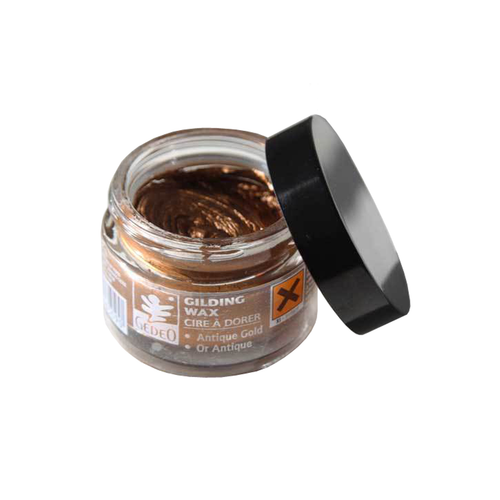Product Description
Renaissance Micro-crystalline Wax - the world's best protective wax?
Renaissance Wax Polish is a microcrystalline wax polish which is not just used by jewellers and artists, it's a heavily used product in antique restoration and museum conservation around the world. Renaissance Wax was developed in the British Museum Research Laboratory by Dr A E A Werner in the late 1950s.
Use on metal (silver, bronze, brass, copper, and more), leather, wood, polymer clay, ceramics, paper, and stone like marble and granite.
Protect metal from tarnishing, preserve patinas from liver of sulphur, great for those rainbow colours.
Use the wax to prevent your tools from rusting.
When thinly applied and rubbed out to full lustre, the wax film is (and remains) glass-clear, with no discolouration either of the wax or the underlying surface. Renaissance wax is free from acids (pH neutral) and will not damage even sensitive materials. For example, photographs for exhibition or of historic value are waxed to protect the image from the natural acidity of hand or environmental pollutants. The wax does not stain or darken even white paper.
The wax dries completely non-sticky and hard, and can be buffed to a clear silky smooth finish - it is virtually invisible. Unlike lacquers the wax will not leave a glossy shiny coating.
How do I apply it?
- You only need a very small amount to seal and protect.
- Apply lightly and evenly with a soft cloth.
- Gently buff with soft cloth
- When dried, buff with a soft cloth. Add a second coat if desired.
What can I use Renaissance Wax for?
- Seal and protect patinas from Liver of Sulphur (test first, the colour of the patina will change slightly on application of the wax)
- Slow down oxidation and tarnishing
- Seal surfaces and give protection against human touch, water and liquids
- Protect wood - ideal for luthiers and instrument makers
- Invisible protective finishing wax
- For use on furniture, cutlery, pottery & more
- Resists liquid spillage
The wax retains a matte finish that will protect against weathering and tarnish. Also great for protecting resin, wood, and leather. Prevent water damage on wooden furniture. The wax is archival and is the #1 choice of major museums and art galleries. A little goes a long way! This wax is also popular for securing colours achieved with Liver of Sulphur on metal.
Renaissance wax can be used with complete success on any surface, from metal clay to white paper to stone – woods, other metals, marble, leather, ivory, ceramics etc. The wax enhances and protects all kinds of museum and fine art objects. It imparts a tough, glass-clear film with an attractive lustre and is highly resistant to fingermarking, environmental pollution, abrasion and weathering in exposed locations.
Sizes available:
- 65ml metal pot
- 200ml metal pot
APPLYING RENAISSANCE WAX ON METALS
- The metal surface should ideally be clean and free from grime and waxes.
- Clean the metal carefully making sure all traces of any cleaning product are removed once the metal is clean.
- Make sure the metal is completely dry - any moisture trapped under the wax may cause blooming or rusting.
- Using a soft cloth (preferably terry-towelling), apply the first coat of wax thinly with a very light touch to avoid dragging the wax off the surface.
- Lightly buff to a full shine after a few minutes.
- After an hour or so apply 2 or 3 further thin coats of the wax, gently buffing each to full shine and allowing about 30 minutes between each coat.
- If finger marks are found on the waxed surface, these can quickly be buffed away with a soft dry rag.
- Loss of wax film brightness may be due to local environmental factors or simply touching by many hands. In any event, dry buffing restores the shine. In worst cases of greasy handling, a quick wipe-over with a rag slightly dampened with paraffin (not white spirit) will instantly degrease without damaging the wax film. A dry rub then brings up the wax shine beautifully.
Note: Wear cotton gloves when handling all metals during any kind of restorative treatment to avoid finger-printing the surfaces. Such marks will be acidic and could produce tarnish even under the wax film.


